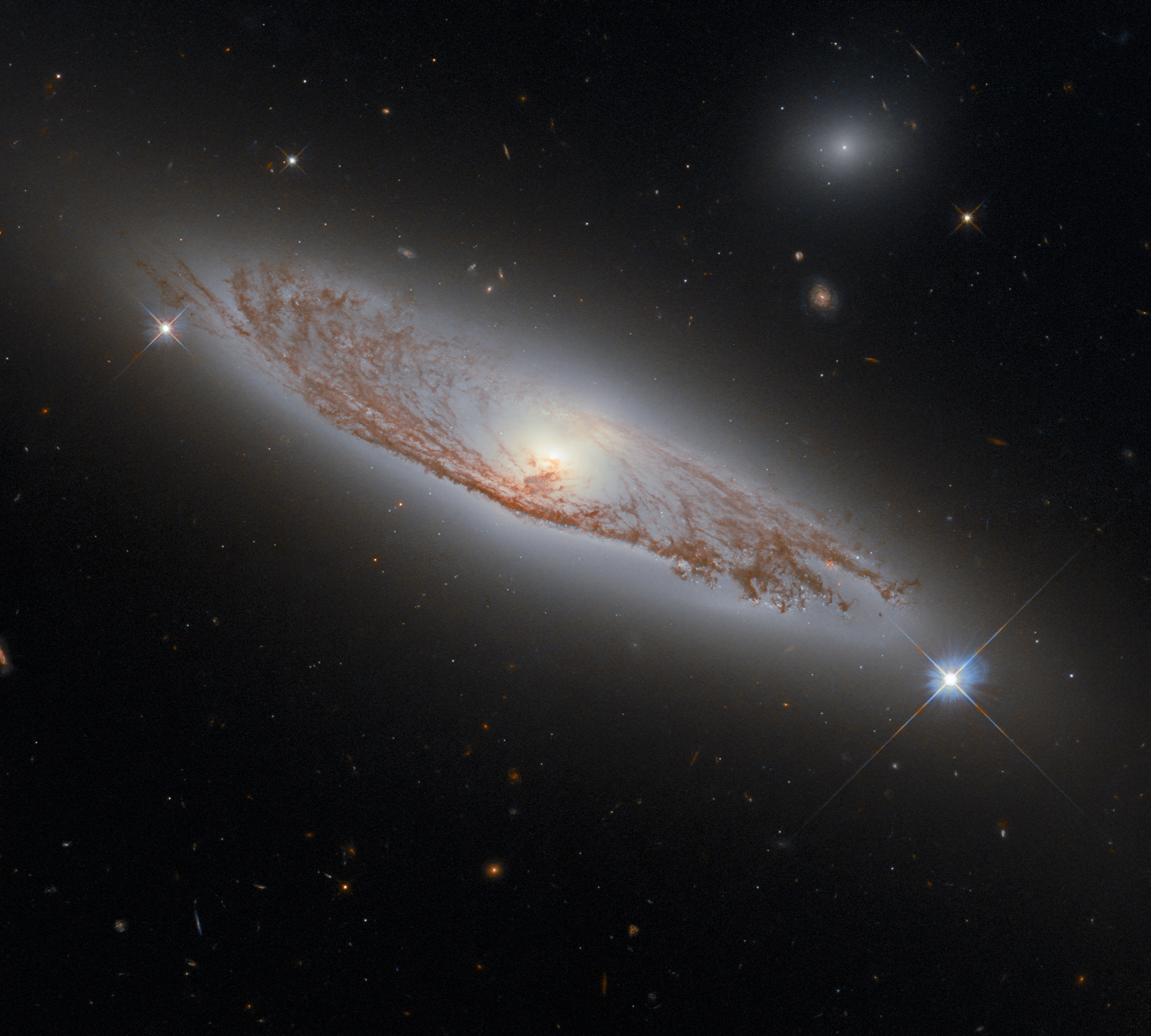This image shows the spiral galaxy NGC 5037, in the constellation of Virgo. First documented by William Herschel in 1785, the galaxy lies about 150 million light-years away from Earth. Despite this distance, we can see the delicate structures of gas and dust within the galaxy in extraordinary detail. This detail is possible using Hubble’s Wide Field Camera 3 (WFC3), whose combined exposures created this image.
WFC3 is a very versatile camera, as it can collect ultraviolet, visible, and infrared light, thereby providing a wealth of information about the objects it observes. WFC3 was installed on Hubble by astronauts in 2009, during Servicing Mission 4 (SM4). SM4 was Hubble’s final Space Shuttle servicing mission, expected to prolong Hubble’s life for at least another five years. Twelve years later, both Hubble and WFC3 remain very active and scientifically productive.
Text credit: European Space Agency (ESA)
Image credit: ESA/Hubble & NASA, D. Rosario; Acknowledgment: L. Shatz
这张图片显示了位于室女座的螺旋星系NGC 5037。该星系由威廉·赫歇尔在1785年首次记录,距离地球约1.5亿光年。尽管距离如此之远,我们仍然可以看到星系内气体和尘埃的微妙结构,而且非常详细。这一细节是通过哈勃的广域相机3(WFC3)实现的,它的综合曝光创建了这张图片。
WFC3是一个非常多功能的相机,因为它可以收集紫外线、可见光和红外光,从而提供了关于它所观察的物体的丰富信息。WFC3是在2009年维修任务4(SM4)期间由宇航员安装在哈勃上的。SM4是哈勃的最后一次航天飞机维修任务,预计将使哈勃的寿命至少再延长五年。12年后,哈勃望远镜和WFC3仍然非常活跃,科学成果丰富。
文字来源:欧洲航天局(ESA)
图片来源:ESA/Hubble&NASA,D.Rosario;致谢:L.Shatz



